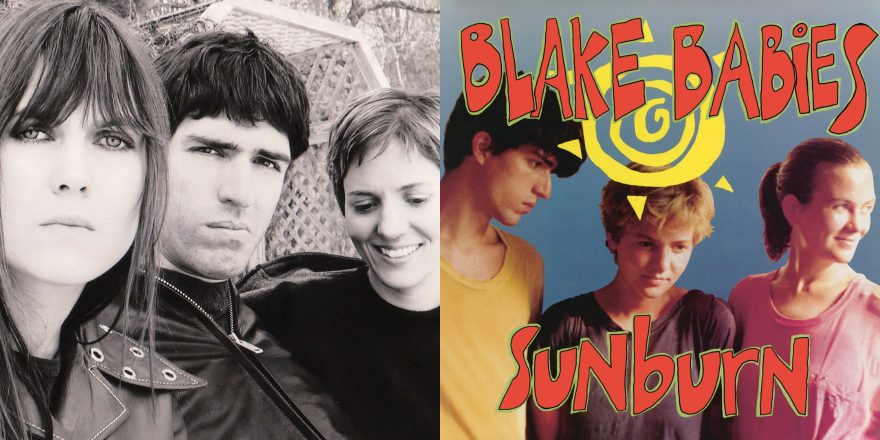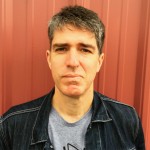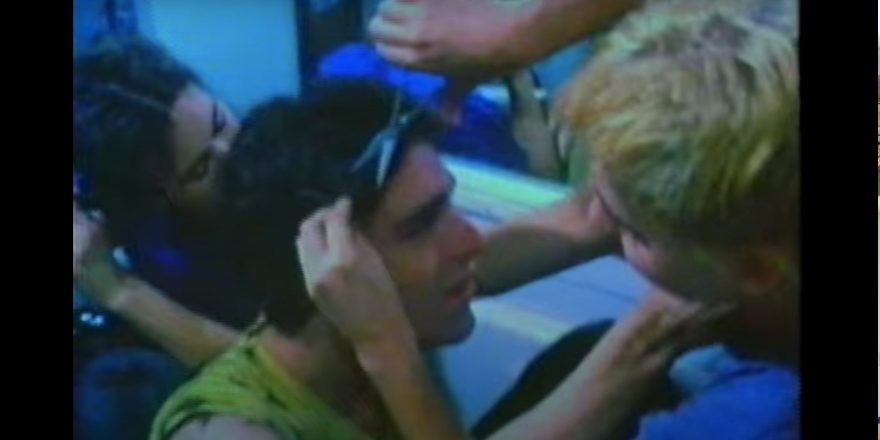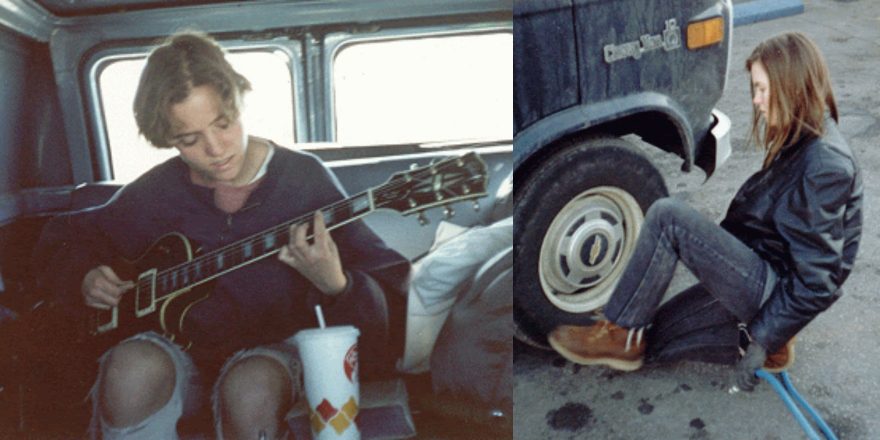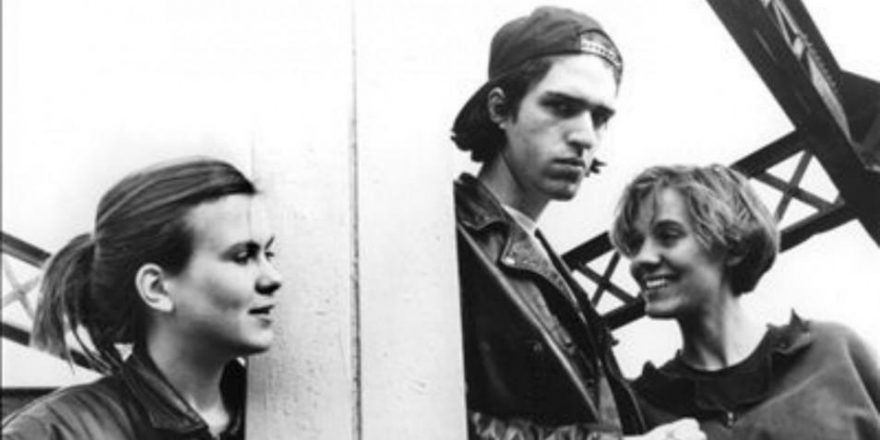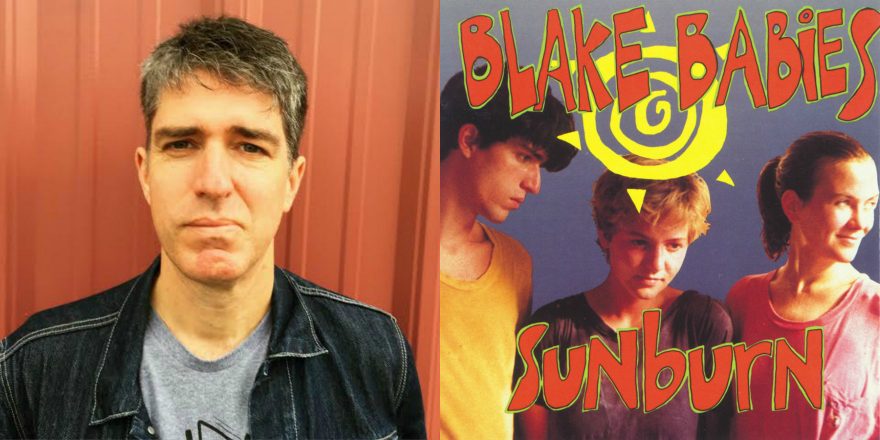I recently found a journal I kept through the making of the third Blake Babies album Sunburn, an album we’re reissuing with a new vinyl pressing on American Laundromat. I didn’t write all that much in the journal, but it reminded me of what it was like to be a “college rock” band on the verge in 1990. On the verge of something, anyway. On the verge of oblivion, as it turned out.
Back then, underground and mainstream music felt like two worlds. What would soon be branded “alternative rock” was getting semi-popular, but it hadn’t broken through to the mainstream like it would a couple years later. Some acts such as R.E.M. and U2 had grown over a decade to great popularity, but it happened gradually and seemingly organically. Our peers and most of our heroes hadn’t yet reached the mainstream. When we dreamed of success, it wasn’t the sort of explosive, ceiling-shattering success of Nirvana or Alanis Morrissette just ahead. That was unthinkable. We dreamed of reaching the level of Pixies or Sonic Youth; being able to afford a crew, travel by bus, stay in decent hotels, and have our rent paid. That was the mountaintop.
Our second album, Earwig, the debut for North Carolina’s Mammoth Records, came out fall of ’89. It wasn’t any sort of breakthrough. We were crawling, getting some college radio airplay and a few nice notices in major magazines. We toured the US under rough conditions, with a barely-functioning van, no crew, and many sparsely-attended shows. But by early 1990, we started to see some progress. Audiences grew, guarantees ticked up, and bigger labels started calling. We went out for a few fancy meals, cut a demo with a bigtime producer that was met with mixed opinions in the band. I hated it. Juliana thought it was OK. Anyway, it didn’t really sound like us, but we followed the carrot on their stick dutifully. If a major could make us huge, that sounded pretty OK to us.
We signed with Mammoth thinking it was just a regular independent label catering to the underground, but we learned that their model was to develop bands and then “upstream” them to major labels. We owed them several more albums, and we didn’t really have any say over whether ended up on a major. We’d had several awkward showcases for labels that spring, including a disastrous set on shared gear at SXSW. One label exec gushed about how we could be the next Talking Heads or Pretenders. That’s how people used to talk in those meetings, lots of smoke. We were young and experiencing our first blush of success. It all seemed to be following the intended plotline.
We came off the road in May of ’90 and went straight into Fort Apache studio to “cut demos” with our producer and biggest advocate, Gary Smith, and Earwig engineer Paul Kolderie. That’s something people used to do, recording demos before the production process started. We cut the tracks and then went into pre-production, basically band practice with Gary in the room telling us what to fix or tighten up. The problem was that the demos were fantastic, uptempo and aggressive, road-tested. I think that’s why recording pre-production demos has fallen out of fashion: It’s just so likely the demos will turn out better than the production. Maybe we should have just released the demo, but we had to spend those $15,000, right? Maybe we should release the demos now, 32 years later! But I digress…
When we started tracking, the process with engineer Steve Haigler was more meticulous than our prior sessions with Gary. Freda remembers tracking drums and cymbals separately. I used Gary’s Jazzmaster and Music Man amp pretty much exclusively, one sound for the pretty, clean lines, and one for the overdriven parts. Track by track, like an assembly line. Juliana recorded at least eight tracks of each vocal and then Gary spent long hours comping a final take. We treated it like a job, working late morning until late evening, breaking to go out for pizza or tacos. On the weekend, we went to the beach. We were beach bums; that’s why it’s called Sunburn. But we were completely sober back then, none of us took a sip of alcohol or used anything stronger during that period.
I’ve repressed some of the experiences because it was traumatic. I’d never really tried to sing before, so my first real singing efforts happened in front of a studio mic. I still can’t listen to my lead vocals on Sunburn; though when I force myself to do so, it sounds so vulnerable. I’m still not sure what I was trying to accomplish with the lyric to “Girl In A Box,” but I think it’s the right vibe. I was obsessed with the album Tender Prey by Nick Cave and the Bad Seeds, and I remember being inspired by the song “Deanna.” I wanted to tell a story that would be a little bit shocking. I also wanted to make my friends laugh. It’s sort of like a dare that you can’t back out of.
I take full responsibility for “Girl in a Box,” but much of our writing process was collaborative. Juliana wrote about half of the album on her own, but mostly I wrote pieces of music for Juliana to complete with lyrics. For my part, for the songs I wrote on the album, I worked very hard to come up with tunes that I thought would resonate with lots of people. On songs such as “Out There,” “Sanctify,” and “Train,” I tried to make the choruses as massive as possible. I had no idea how to write a “pop” song, but I knew what I liked in a radio hit. All my childhood favorites provided the foundation, Fleetwood Mac, The Beatles, Eagles, Cheap Trick. I mean, how does a song like “Surrender” come into existence? Somebody had to think that up. That’s what inspired me to put in the hours crafting those tunes. It’s the most focused I’d ever been.
We mixed at the Carriage House in Connecticut, just outside New York City. That felt more like a vacation, because we really didn’t have much to do with the mixing. Gary and Steve worked long days, but we mostly just hung out in the lounge or ordered out for food on the budget. The one conversation I remember was with the nice guy studio owner as we sat together watching MTV one afternoon. I was on a tangent about Michael Bolton, asking if anyone could believe how terrible he looked and sounded. The studio owner said, “You know, he lives just up the street.” “Oh, really?” “Yes,” he said, “actually, we play golf together.” Uh-oh. “Yeah,” he said, “and as a matter of fact, he’s my kids’ godfather.” I started to awkwardly apologize for the slight, and he waited a beat before saying, “Aha, I got you, didn’t I? But he actually does live just up the street.”
Our fellow Bostonian acquaintances Pixies had just finished mixing their album Bossa Nova, and Freda and I took a cassette of the album out to our van to drive around and listen. I absolutely loved them, but I couldn’t really connect with the music. Maybe it’s because I had my head too far into our record. It was exciting to finally hear all the lyrics, and a lot of Juliana’s writing blew me away and sort of made me worry about her. I felt like we’d really done what we set out to do, and I felt confident in the future. We put together a sequence and made cassettes, then Freda and I drove straight to her brother’s place in North Jersey to spend a couple days in New York, tingling with excitement.
We impulsively decided to call up the A&R guy who told us we were the next Talking Heads to let him know we were in town and had a finished album. He said, “Come on by, let’s hear it.” We hopped on the subway to Midtown back to the office high up in this imposing glass and steel skyscraper. After checking in with the gorgeous receptionist, we waited for what seemed like an hour. At last Mr. A&R guy came out and curtly shook our hands as we briskly followed him back to a spacious, tastefully decorated office with floor-to-ceiling CD towers. He popped in the cassette and turned it up loud. We listened to side one and he stood up to flip the tape, giving me a sideways glance as “Girl in a Box” closed side one. We listened to side two, and then he abruptly stood up, popped the tape out, handed it back to us, and said, “Well, then, I’m sorry to say, it just wasn’t what I’d hoped for. I’m really disappointed.”
Naturally, we were devastated. It was disorienting, because we knew we’d made our best record, probably the best record we were capable of making. But did we? Maybe we’d gone off course and lost any magic we’d had. It shook our confidence and left us confused and depressed.
I have a theory. The label owner, Jay Faires, had been wheeling and dealing behind the scenes, talking to various major labels about us and about a broader label deal. It may be that this guy just didn’t like the record, but he would be the only person I’ve ever heard of who loved Earwig but thought we’d lost it for Sunburn. It’s objectively a better record. My theory is that Jay, who could be brash and aggressive, offended the A&R guy with his negotiation tactics behind the scenes. Maybe A&R took the opportunity to get back at Jay and Mammoth through his cruelty. Now that I’ve worked in A&R, I can’t imagine doing that to a band, but I can definitely confirm that not everyone in the music business is nice.
Sunburn came out on Mammoth fall of ’90 to nearly unanimous critical acclaim, but it wasn’t the breakthrough hit we’d all hoped for. We made a video for “Out There” that got played on MTV’s “alternative” show, 120 Minutes. It moderately boosted our touring, but we still relied heavily on college radio, playing the same small clubs and markets for many months of touring. All the personal momentum ran out by summer of 1991 when Freda and I decamped to Indiana to record the first Antenna album. After we put out the couple of tracks left over from Sunburn (“Downtime” and “Temptation Eyes”) along with a few new ones, we hung it up and Juliana put together a solo project that launched her career for real.
Juliana’s profile grew exponentially after we split, and Mammoth eventually did a deal with Atlantic Records that upstreamed Juliana’s remaining albums. I made a few more albums for Mammoth, but I’d become an afterthought by the time Mammoth sold to Disney’s Hollywood Records for a reported $25 Million in 1997. Disney wanted the hit artists on the label, such as Seven Mary Three and Squirrel Nut Zippers. It took a bit of work to get Disney’s executives to pay attention enough to even be bothered to release me from my contract. So I did what every kid with a dream and a guitar does: I went to law school.
Happily, Freda, Juliana, and I have rekindled our friendship several times over, and we made what I personally consider our best album, God Bless the Blake Babies, in 2001. We’ve periodically done shows together and supported one another in all of our mostly successful post-band pursuits. It’s wild to think that was over 30 years ago. It’s even wilder to listen to the music with the knowledge of what indie music sounds like today, and realize it still sounds contemporary. With the exception of a few dated production touches, Sunburn could fit in with what we call Indie Pop today.
I have a soft spot in my heart for the kid who wrote those journal entries, revealing all the insecurity, neurosis, and big dreams through his (my) words. But that’s really all that kid — 22-year-old me — wanted: for the music to be immortal. To still have relevance many years on. Dashed dreams aside, I like to think he would be happy with how things turned out. I know I am.



